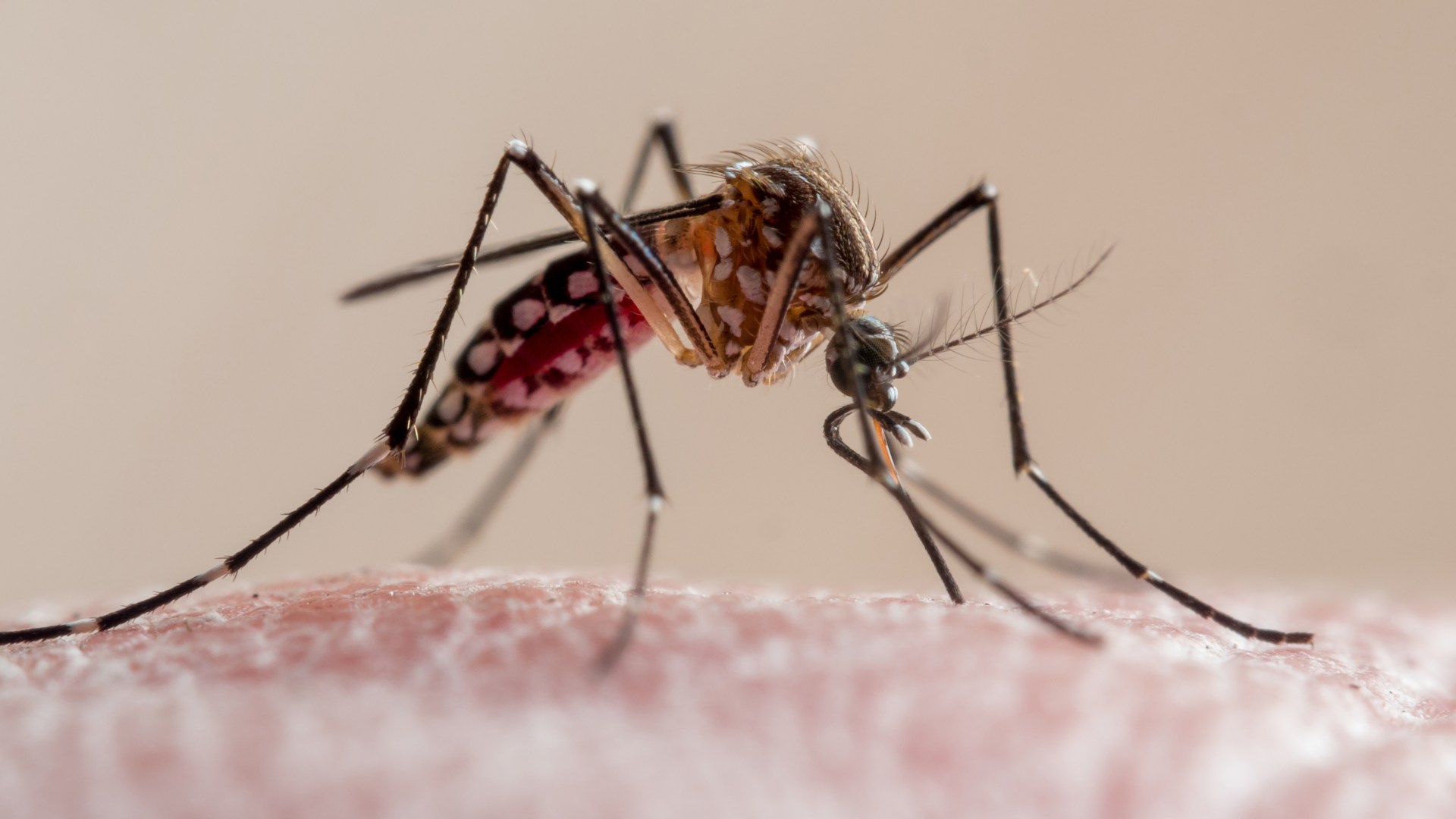A DAD has died from ‘triple E’ horse virus half a decade after he was bitten by an infected mosquito in his backyard.
Richard Pawulski, 49, passed away due to complications from eastern equine encephalitis (EEE), which he picked up five years ago.
1
Known as EEE or ‘triple E’, the virus got its name after first being spotted in horses.
The rare bug kills around a third of those it infects and often leaves survivors severely disabled.
This year, the US has faced a large outbreak of the mosquito-borne virus, which led to the death of a man from New York State in August.
The surge in cases promoted curfew measures and warnings across several US states as experts feared the bug was making a resurgence.
So far this year, 16 people in the US have tested positive for the virus, according to the latest CDC data.
It’s believed Richard, who lived in Connecticut, picked up the virus while clearing out his backyard in August 2019.
In the years that followed, he was plagued with several health complications, including brain damage before he died in October 2024.
“I’m not joking when I say your life can change in the blink of an eye, because that was what happened to us,” Richard’s grieving daughter Amellia Pawulski, 18, told the New York Post.
At first, the dad, originally from Poland, complained of intense headaches and began vomiting yellow bile before he was taken to hospital.
Doctors rushed Richard into emergency surgery to relieve swelling in his brain, which left him in a coma for two months.
He was eventually diagnosed with EEE, after doctors spotted other cases cropping up in Connecticut area that year.
Amellia and her mother, Margaret were told Richard’s brain damage was extensive and that he would unlikely ever be the same again.
The two ultimately decided to take him off life support, believing it was what he would have wanted – when he suddenly woke up.
For the next five years, Richard bounced between hospitals and nursing homes.
He endured a traumatic brain injury, liver and kidney complications, seizures, and other severe illnesses, along with frequent bouts of pneumonia.
Some days, Richard wasn’t aware of what year it was or where he was, Amellia told the Post.
Everything you need to know about eastern equine encephalitis
Eastern equine encephalitis (EEE) is a virus spread to people from the bites of infected mosquitoes.
Although rare, EEE infections can be very serious.
Approximately 30 per cent of people who catch the virus die, according to the Centers for Disease Control and Prevention (CDC).
Those who survive may continue to suffer from ongoing neurologic problems, it added.
Initial symptoms tend to show up three to 10 days after a bite from an infected mosquito, according to the Massachusetts Department of Public Health (DPH).
They include:
- Fever
- A stiff neck
- Headache
- Lack of energy
The virus can cause Inflammation and swelling of the brain, called encephalitis, a complication that can be dangerous.
“The disease gets worse quickly and some patients may go into a coma within a week,” the DPH noted.
According to the CDC and Cleveland Clinic, symptoms of a severe infection that causes brain inflammation may include:
- Confusion
- Diarrhoea
- Drowsiness
- Headache
- High fever (higher than 104 degrees Fahrenheit or 38 degrees Celsius)
- Loss of appetite
- Vomiting
- Behavioural changes
- Seizures
The best way to protect yourself from the disease is to avoid getting bitten by mosquitoes.
Use insect repellents and wear long sleeves, long trousers and socks when outdoors will help keep mosquitoes away from your skin.
Keep mosquitoes out of your house by repairing any holes in your screens and making sure they are tightly attached to all your doors and windows.
Remove areas of standing water around your home.
You can also consider scheduling outdoor events to avoid the hours between dusk and dawn, when mosquitoes are most active.
Sources: CDC, DPH, Cleveland Clinic
Fortunately, he was lucid enough in his final days to tell his wife and daughter that he loved them.
Richard passed away on October 14
“None of this stuff would have come up if he didn’t get it[EEE],” Amellia said.
“He always tried to look at the positive,” she added.
“I remember people being like, ‘Oh, how’s your day?’ And he was like, ‘My day is great. I woke up. I can breathe on my own. I can talk on my own. I can go to the bathroom on my own. I have no reason to be upset.’”
The CDC says only a few cases of EEE are reported in the US each year, with most infections found in the eastern and Gulf Coast states.
‘This is one of the more active years’
Outbreaks of EEE usually occur in Massachusetts every 10 years and typically last two to three years.
Philip Armstrong, chief scientist at the Center for Vector Biology & Zoonotic Diseases at the Connecticut Agricultural Experiment Station, said the clusters this year are cause for vigilance.
“This is one of the more active years,” he told Stateline.
“I would say, about every four or five years, we see these sort of regional outbreaks that occur.”
Eight states, including Massachusetts, New Hampshire, New Jersey, New York, North Carolina, Rhode Island, Vermont and Wisconsin have collected reported 16 human cases of the virus this year.
In a 2019 outbreak, there were six deaths among 12 confirmed cases in Massachusetts.
The outbreak continued the following year with five more cases and another death.
Symptoms of EEE include fever, headache, vomiting, diarrhoea and seizures.
People who survive are often permanently disabled, and few completely recover, Massachusetts authorities said.
The disease is prevalent in birds, and although humans and some other mammals can catch EEE, they don’t spread the disease.




